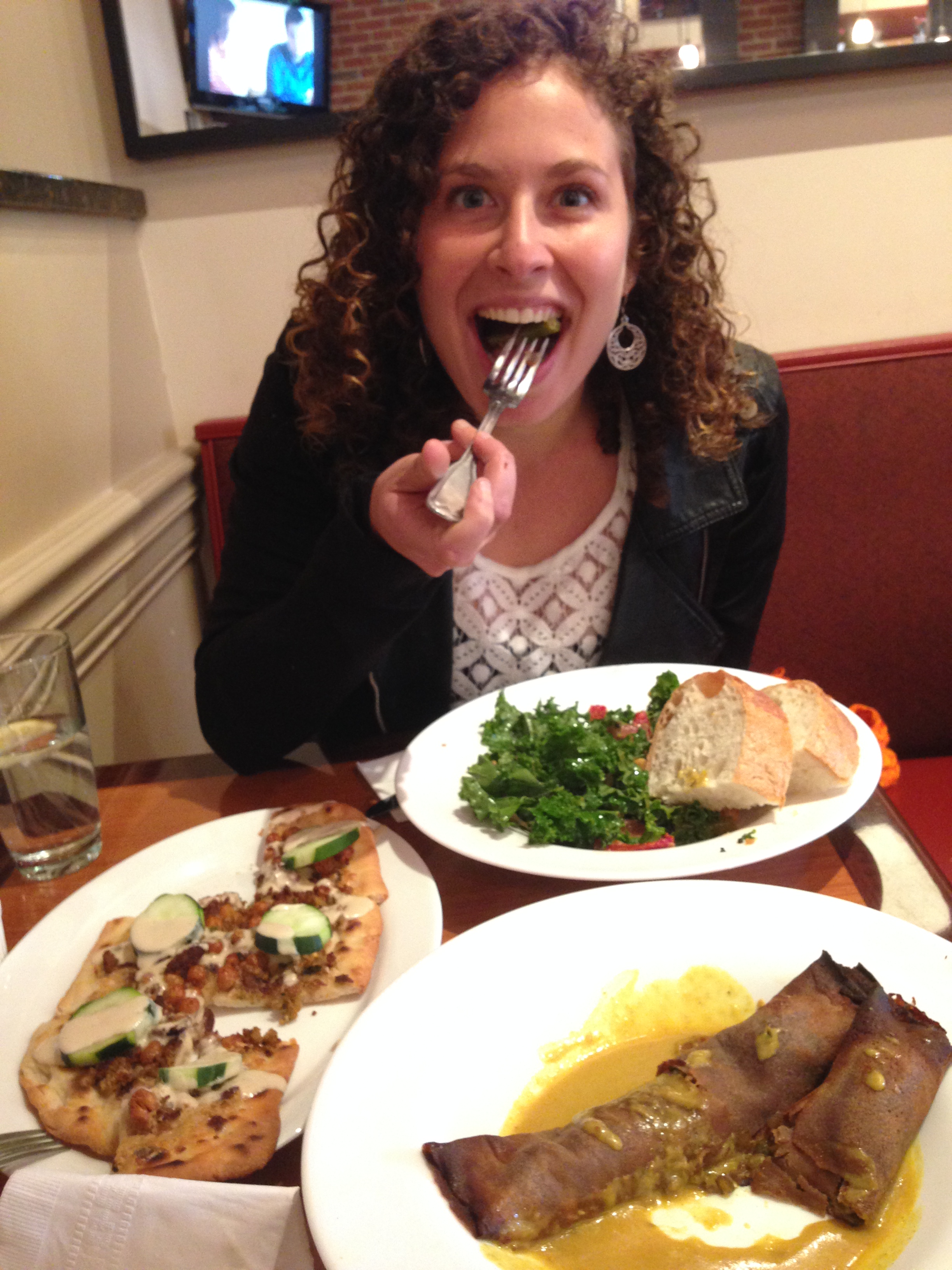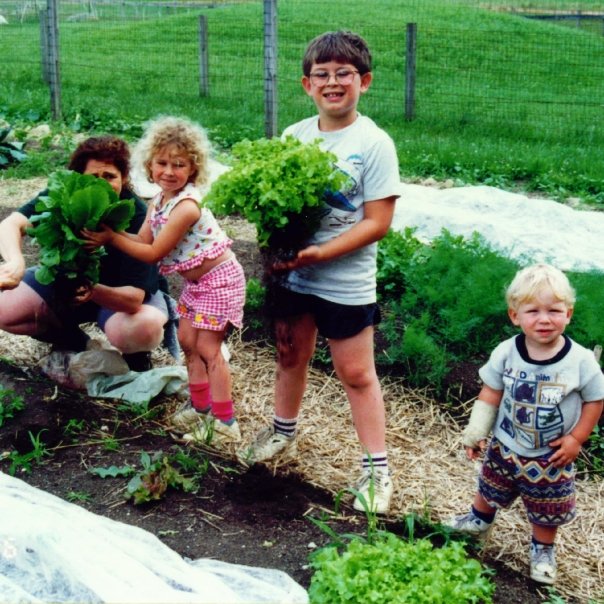Learning How to Live to Eat — the “Right” Way
Editor’s note: Please welcome our new West Coast Fellow, Autumn Rauchwerk!

West Coast Fellow Autumn Rauchwerk
I grew up surrounded by a diverse array of influences when it came to food. My grandmother on my father’s side would spend the entire day in the kitchen before a family dinner, yet dinner still was never ready until 10 pm. She made all of our birthday cakes from scratch, always following recipes exactly, unbelievable patience and precision guiding her every move in the kitchen. Her husband, my grandfather, was a Holocaust survivor whose sense of comfort and resilience was deeply rooted in food. My mother’s kosher Jewish parents got me to love cinnamon raisin bagels, Chinese food, and corned beef.
My parents themselves were entirely different influences. They were extremely health-conscious, and growing up in their household left me with some interesting ideas about eating:
- To be healthy you must drink three glasses of skim milk and eat at least three pieces of fruit each day.
- A balanced dinner requires a huge salad, a protein, a vegetable and a starch.
- Steak and fish are only to be eaten on occasion, and your parents serve them to you to make you suffer. They are best drowned in ketchup.
- Pork and processed foods can only be eaten in restaurants, while camping or sneakily at friends’ houses.
- “Vegetarian” food means tofu, mushy broccoli, and mushrooms with some soy sauce dumped on top.

Me as a kid enjoying some garden-fresh greens
All of the influences that surrounded me had this in common: Food is the part of a family gathering everyone most looks forward to, and food is the way people show love.
My appreciation for food beyond what I was raised to believe grew slowly at first, starting with me founding a Culinary Arts Club in high school. Once I enrolled at American University, a close friend and the Bon Appétit campus café opened up my mind to how delicious and diverse a vegetarian diet could be.
The following year, motivated by a desire to be healthier and challenge myself, I tested out veganism. And in time, the lifestyle stuck. I realized that not only was it an exercise in self-control and living in congruence with my morals, but it could encompass my love for food in a creative new way.
Our campus café opened my world up to the delicious possibilities of tempeh, seitan, and tofu. Living in Washington, DC, gave me an entirely new perspective on cultural foods and made me realize that, while the American diet is meat-focused, most cultural diets are not, due to the high cost and scarcity of animal products. Vegetables, grains, and spices are used as the foundation of a meal in creative ways all over the world, especially in developing or just recently developed nations. My love for food fed my desire to travel.
American University encouraged studying abroad, so I chose a Spanish immersion program in Costa Rica. My host brother was a chef, and my host mom was a wizard in the kitchen. They whipped up traditional plant-based Costa Rican dishes as well as their own creative ones, using the freshest local produce purchased from the feria, a farmers’ market with stands from hundreds of local farmers. My host family inspired me to get more into cooking in order to be able to show them my love and appreciation along with the tastes I grew up with.
The next summer, I had the opportunity to live in American Samoa for a fellowship with the National Oceanic and Atmospheric Administration (NOAA). There was so much community and generosity surrounding food, and no one went hungry. However, there were virtually no vegan or even vegetarian options in the restaurants, very little local produce, a plethora of fast and processed foods, very low levels of physical activity, and as a result, extremely high obesity and diabetic rates. With no Internet access in my house, I would improvise with cooking supplies I found at the Asian grocery store, produce stands, and the tree in my backyard — inventing dishes out of green papaya, soba noodles, and fresh coconut. Everything was an experiment and a learning experience.
Once I returned from traveling, I went an alternative spring break to the Corn Belt, visiting organizations from the Iowa Soybean Association and Dupont Pioneer to the Kansas City Farmers’ Market and the Land Institute to glean a deeper understanding of the many perspectives that come together to form such a complex food system. That same semester, I worked with the Bon Appétit team to start a food recovery program on campus, taking a small step towards alleviating hunger in the DC area.
This experience connected me with the national nonprofit Food Recovery Network (FRN), a Bon Appétit partner, and after graduating I joined the first influx of full-time staff members on that team. I was able to lead the expansion team and work one on one with students from campuses across the country to help them start recovery programs at their schools. In just over a year, we grew from 23 chapters to more than 100! Being part of such a small yet motivated team gave me the opportunity to become a team leader, lead workshops, present at conferences, organize community events, and work closely with partners, including Bon Appétit Waste Specialist Claire Cummings.
At Food Recovery Network, we loved Bon Appétit. The managers and chefs on the Bon Appétit campuses we dealt with prioritized sustainability and went above and beyond to establish a mutually beneficial relationship with us. My coworkers and I admired how small, interconnected and supportive the Bon Appétit teams seemed to be.
Now that I’ve moved west for love and been hired as the new West Coast Fellow for Bon Appétit, I am excited to dive deeper into the issues that intrigue me every day and to become a part of the Bon Appétit community. I believe I’ve found the job that will propel me forward on my lifelong journey of figuring out how we can live to eat in the healthiest, most ethical and sustainable way.